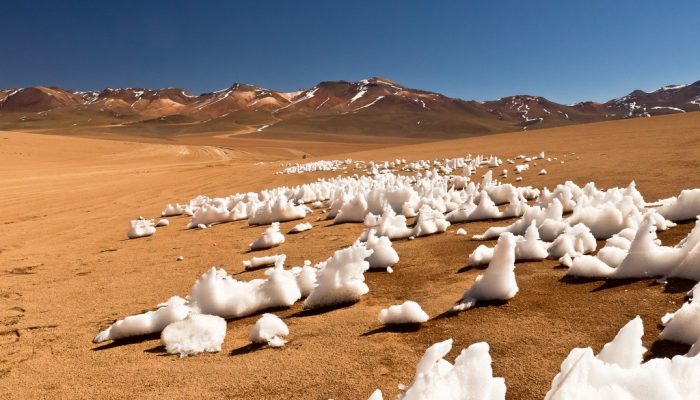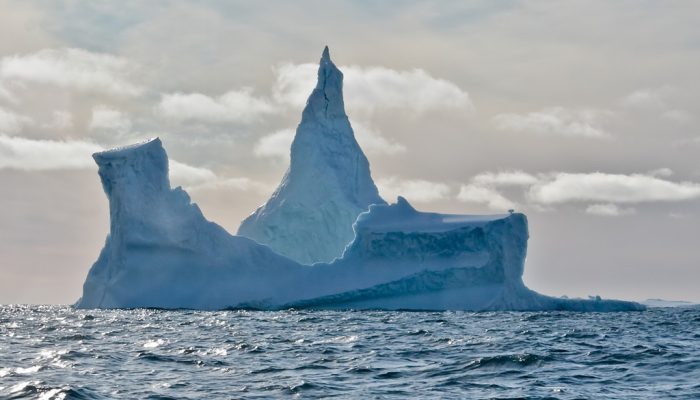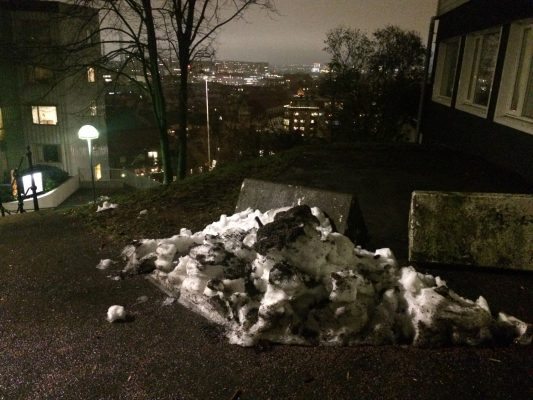With over 198 000 glaciers in the world, you can always find a glacier that fits your mood or a given occasion. So why not for example celebrate the first Image of the Week of May with a picture of the aptly named May Glacier? May Glacier is in fact not named after the month, but after Mr May, an officer onboard the Flying Fish during her expedition to the East Antarctic coast in the 1840s. Apart ...[Read More]
Image of the Week – Why is ice so slippery?
Having spent most of my life in places where the temperature hardly ever falls below zero, my first winter in Sweden was painful. Especially for my bum, who met the ice quite unexpectedly. Reading the news this week, from reports of emergency services overwhelmed after so many people had slipped to a scientific study on how no shoes have a good enough grip, via advice on how to walk like a penguin ...[Read More]
Image of the Week – Alien-iced

What do Chile and Jupiter’s moon Europa have in common? If you like astronomy, you may reply “space missions!” – Chile’s dry air and clear skies make it an ideal location for telescopes like the VLT or ALMA, while Europa’s inferred subsurface ocean will be studied by the upcoming mission to Jupiter JUICE, due to launch in 2022. But Chile’s high altitude Atacama desert and Europa’s frozen surface a ...[Read More]
Image of the Week – The 2018 Arctic summer sea ice season (a.k.a. how bad was it this year?)
With the equinox this Sunday, it is officially the end of summer in the Northern hemisphere and in particular the end of the melt season in the Arctic. These last years, it has typically been the time to write bad news about record low sea ice and the continuation of the dramatic decreasing trend (see this post on this blog). So, how bad has the 2018 melt season been for the Arctic? Yes, the 201 ...[Read More]
Image of the Week — Quantifying Antarctica’s ice loss
It is this time of the year, where any news outlet is full of tips on how to lose weight rapidly to become beach-body ready. According to the media avalanche following the publication of the ice sheet mass balance inter-comparison exercise (IMBIE) team’s Nature paper, Antarctica is the biggest loser out there. In this Image of the Week, we explain how the international team managed to weight Anta ...[Read More]
Image of the Week — Seasonal and regional considerations for Arctic sea ice changes
The Arctic sea ice is disappearing. There is no debate anymore. The problem is, we have so far been unable to model this disappearance correctly. And without correct simulations, we cannot project when the Arctic will become ice free. In this blog post, we explain why we want to know this in the first place, and present a fresh early-online release paper by Ingrid Onarheim and colleagues in Bergen ...[Read More]
Image of the week – How hard can it be to melt a pile of ice?!
Snow, sub-zero temperatures for several days, and then back to long grey days of near-constant rain. A normal winter week in Gothenburg, south-west Sweden. Yet as I walk home in the evening, I can’t help but notice that piles of ice have survived. Using the equations that I normally need to investigate the demise of Greenland glaciers, I want to know: how hard can it be to melt this pile of ice by ...[Read More]
Image of the Week — Think ‘tank’: oceanography in a rotating pool
To study how the ocean behaves in the glacial fjords of Antarctica and Greenland, we normally have to go there on big icebreaker campaigns. Or we rely on modelling results, especially so to determine what happens when the wind or ocean properties change. But there is also a third option that we tend to forget about: we can recreate the ocean in a lab. This is exactly what our Bergen-Gothenburg tea ...[Read More]
Image of the Week – ROVing in the deep…
Robotics has revolutionised ocean observation, allowing for regular high resolution measurements even in remote locations or harsh conditions. But the ice-covered regions remain undersampled, especially the ice-ocean interface, as it is still too risky and complex to pilot instruments in this area. This is why it is exactly the area of interest of the paper from which our Image of the week is take ...[Read More]
Image of the Week – Ice Ice Bergy

They come in all shapes, sizes and textures. They can be white, deep blue or brownish. Sometimes they even have penguins on them. It is time to (briefly) introduce this element of the cryosphere that has not been given much attention in this blog yet: icebergs! What is an iceberg? Let’s start with the basics. An iceberg, which literally translates as “ice mountain”, is a bit of fresh ice that brok ...[Read More]


